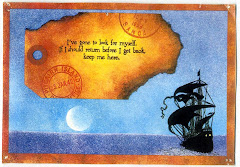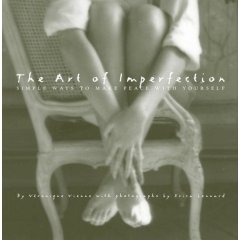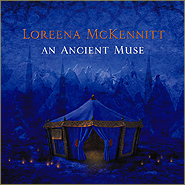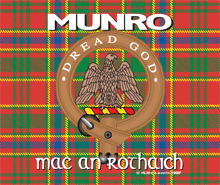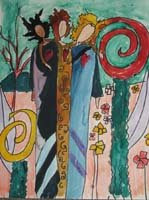"COTTAGE NEAR WELLS" - Helen Allingham
**********
How is your summer going? I can't believe June is already over and tomorrow is the Fourth of July!
After a bitterly cold and extremely snowy winter, flooding in the spring and unusually cool temperatures and torrential rains through the first two weeks of June, summer is finally here.
The prairie is as green as the hills of Ireland, the temperatures are balmy, the air is laden with the scents of my hardy shrub roses and the breezes are mere zephyrs. The mosquitoes have made their presence known only in the past few days.

"THE GIRL AT THE GATE" - Sir George
Clausen **********
So far this summer I have marked my 60th birthday and observed my 35th wedding anniversary. I am still processing these two events and will mark them as milestones in a later post. Note that I did not write "celebrated". Dan forgot my birthday, so he has been in the dog house for a week.
Gracie is out of the dog house, as she has been very good lately. Now that the weather is nice she spends most of the time outdoors. She has worn paths all along the perimeters of the yard. There is Maggie the mutt to run the fence with on the north side, Daisy the golden doodle to bark at across the alley to the south, and Ollie the golden retriever and his springer spaniel pal to sniff noses with at the west fence.
Gracie also has established sentry posts at the two east gates which face the street. When the patio door is open, she can spot a passerby at the southeast gate, tear into the house to view him or her passing the living room window, tear to the bedroom to view that passing, then tear out of the house to the northeast gate for one final look before the person passes out of sight. All this is accompanied either by barking or else by a nervous, agitated moaning which I find hilarious.

"COTTAGE AT
CHIDDINGFORD" - Helen
AllinghamNote the older lady on the left spreading linens on the hedge. (Click to enlarge.)
**********
And me, I'm reading like a fiend and have been going through books at a rate of one every day or two. If the afternoon is fair and Dan is working late, I can sit on the deck and read until 9 p.m. with only a break for a sandwich. Occasionally I will lift my eyes to watch the sun slanting through the greenery, listen to the neighborhood kids or check on Gracie. When she has tired herself out from tearing around the yard, she naps on the deck by my feet.
In my efforts to be thrifty, I have re-discovered the joys of finding second-hand books. I can usually find a book for $3.00 or less at a used bookstore, and thrift store books are even cheaper - as low as 50 cents.
In recent years, I have been reading mostly trade paperbacks. I know I will seldom be disappointed with a trade, and I still look for them at the above-mentioned places, as well as rummage sales. But I've also discovered books I would have otherwise overlooked. Two such books I just finished reading are "Thale's Folly" by Dorothy Gilman and "Shadows on the Ivy" by Lea Wait.
"Thale's Folly" is written by the author of the Mrs. Pollifax series, which I have known about forever but never read. Because I enjoyed this book so much, I will be looking for a Mrs. Pollifax book. "Shadows on the Ivy" is "An Antique Print Mystery", in which the main character is a antiques dealer who specializes in old prints. At the time this book was published, Wait had also written two other antique print mysteries, "Shadows on the Coast of Maine" and "Shadows at the Fair." I'll be looking for those too.

"THE EDGE OF THE WOODS" - Elizabeth
Stanhope Forbes
**********
Last December, when I was ordering books for Christmas gifts on amazon.com, I found an inexpensive hardcover copy of "The Illustrated Lark Rise to Candleford" and snapped it up. I already had the Penguin Classic paperback of LRTC, but I just had to order the illustrated copy because it features some of the best Victorian paintings of a bygone era. (All of the paintings on this post are from the book.) When the book arrived, I put it aside, as I knew this was a book to savor in the summertime.
LRTC is actually a trilogy of three books written by Flora Thompson: "Lark Rise", "Over to Candleford" and "Candleford Green". The illustrated edition condenses the second and third books, but since book one is my favorite, this did not bother me. (What does bother me is that the paintings - and actual black and white photographs - aren't attributed until the end of the book, and since there are dozens of them, one has to continue flipping to the back page to find the information.)

"LEAVING HOME" - Henry Herbert La
Thague(Above: People usually walked everywhere. The rare sight of a pony and trap attracted many onlookers!)
**********
LRTC depicts the life in the English countryside in the bucolic, pastoral days before the Industrial Revolution changed the face of England forever. And thus its attraction for me, an Anglophile who is drawn to those times. The frontispiece of the book calls Lark Rise "Perhaps the most vivid, detailed and immediate portrait of country life ever written." The book is largely autobiographical, although Flora calls herself Laura in the book, and has changed the name of her Oxfordshire village of Juniper to Lark Rise.
In LRTC, the cottagers are poor, but not impoverished. Thompson describes the children as sturdy and healthy, though few (unlike Laura) are ever given milk to drink. She also describes the inhabitants as almost universally happy. (I did take her writings with a grain of salt. Thompson wrote the book when she was older, and age may have lent a rose-colored tinge to her memories.)

"GATHERING FIREWOOD" - Helen
Allingham**********
In addition to the text, paintings and photos, the pages include old woodcuts, and facsimiles of pressed flowers, herbs and leaves. The paintings of Helen Allingham, perhaps the best known English cottage/garden painter, are heavily featured. These cottagers, with very limited resources, grew front-yard gardens more beautiful than we modern-day gardeners could hope to imagine.
Most likely, Thompson's descriptions of the homes, gardens, local flora and fauna and landscapes are what drew me to the book in the first place, but she also outlines the daily life of the villagers as they go about farming, housekeeping and cooking, visiting, celebrating holidays and going to "town". She also peppers the book with interesting "characters" of all sorts.

"THE MOWERS" - Sir George Clausen
**********
I would have liked to find more paintings to illustrate this post, but searched the Internet in vain. With the exception of Helen Allingham paintings, the publishers must have used works by lesser-known painters, or else lesser-known works of famous Victorian painters. I would have loved to have included "The Lacemaker", showing a young girl plying a craft now all but forgotten, and "Scaring Birds", a funny painting of a young boy trying to smoke out pesky birds from garden or field.

"MAY DAY GARLANDS" - T. F. Marshall
**********
I wish I would have been able to see England in that long lost time, to have tea with the cottage women, walk the woods for wildflowers, sit by a pure babbling brook or visit with Old Sally, Miss Lane and Sir Timothy. I would like to make May Day wreaths with the children and romp with them as they spent all day outdoors (unlike our kids), and watch the grain being reaped and harvested by hand in the haze of a late summer day.

Thompson was called "a dunce" by her country school teacher, but, as the book jacket says, "Flora possessed the literary gifts, the eye and memory, for everyday detail and the intimacies of experience, which would one day combine to produce this gentle masterpiece."
Lark Rise was made into a miniseries by the BBC, but I have not viewed it. I understand there is also a "Lark Rise Recipe Book" with accompanying "Cook's Notebook".
Thompson as a young woman
**********
Flora Thompson was born in 1877. LRTC is set mostly in the 1880s and 1890s, as Laura grows from child to young woman. As the books progress, the scope enlarges from the village to encompass the hamlet, setting of the the village school, and the market town, where the post office was located. (Like Laura, Thompson went to work at the post office at age 14.)
During this remarkable time, there was a great transition in the English countryside. Home life, methods of schooling, work and social interactions all changed drastically in the last years of the 19th century.
Thompson married young and later wrote mass-market fiction to help support her family. She wrote the LRTC trilogy while in her 60s, from 1939-1943. These were the worst years of WWII for British people. I think that it is no coincidence, therefore, that Thompson may have romanticized that lost world of rural Victorian England. But I also think she was the keenest of observers with the strongest of memories, and well worth reading.
















































